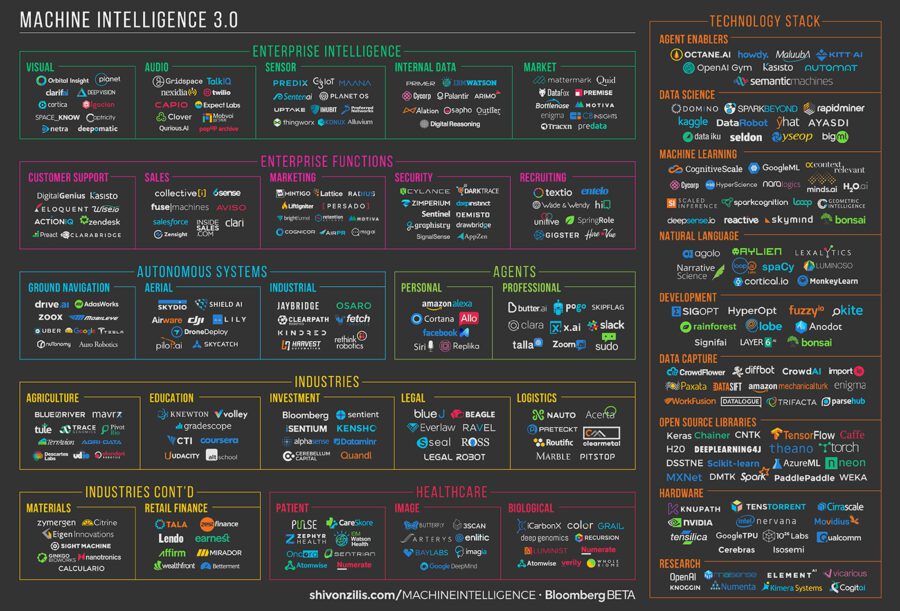This article was written by Shivon Zilis and James Cham.
Watching the appeal and applications of machine intelligence expand:
Almost a year ago, we published our now-annual landscape of machine intelligence companies, and goodness have we seen a lot of activity since then. This year’s landscape has a third more companies than our first one did two years ago, and it feels even more futile to try to be comprehensive, since this just scratches the surface of all of the activity out there.
As has been the case for the last couple of years, our fund still obsesses over “problem first” machine intelligence—we’ve invested in 35 machine intelligence companies solving 35 meaningful problems in areas from security to recruiting to software development. (Our fund focuses on the future of work, so there are some machine intelligence domains where we invest more than others.)
At the same time, the hype around machine intelligence methods continues to grow: the words “deep learning” now equally represent a series of meaningful breakthroughs (wonderful) but also a hyped phrase like “big data” (not so good!). We care about whether a founder uses the right method to solve a problem, not the fanciest one. We favor those who apply technology thoughtfully.
What’s the biggest change in the last year? We are getting inbound inquiries from a different mix of people. For v1.0, we heard almost exclusively from founders and academics. Then came a healthy mix of investors, both private and public. Now overwhelmingly we have heard from existing companies trying to figure out how to transform their businesses using machine intelligence.
For the first time, a “one stop shop” of the machine intelligence stack is coming into view—even if it’s a year or two off from being neatly formalized. The maturing of that stack might explain why more established companies are more focused on building legitimate machine intelligence capabilities. Anyone who has their wits about them is still going to be making initial build-and-buy decisions, so we figured an early attempt at laying out these technologies is better than no attempt.

Figure 1. Image courtesy of Shivon Zilis and James Cham, designed by Heidi Skinner.
Click on the image to zoom in. To read the full article, click here. Above is the infographics from the original article.
Top DSC Resources
- Article: What is Data Science? 24 Fundamental Articles Answering This Question
- Article: Hitchhiker’s Guide to Data Science, Machine Learning, R, Python
- Tutorial: Data Science Cheat Sheet
- Tutorial: How to Become a Data Scientist – On Your Own
- Categories: Data Science – Machine Learning – AI – IoT – Deep Learning
- Tools: Hadoop – DataViZ – Python – R – SQL – Excel
- Techniques: Clustering – Regression – SVM – Neural Nets – Ensembles – Decision Trees
- Links: Cheat Sheets – Books – Events – Webinars – Tutorials – Training – News – Jobs
- Links: Announcements – Salary Surveys – Data Sets – Certification – RSS Feeds – About Us
- Newsletter: Sign-up – Past Editions – Members-Only Section – Content Search – For Bloggers
- DSC on: Ning – Twitter – LinkedIn – Facebook – GooglePlus
Follow us on Twitter: @DataScienceCtrl | @AnalyticBridge
